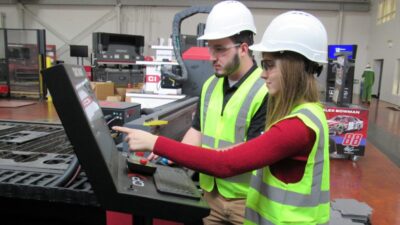It is important to stay on top of the imaging systems trends and developments in order to use the growing industry to the company's advantage.
Today’s modern warehouse is filled with vision-guided vehicles moving shelves, self-docking to recharge, and navigating complex areas by themselves. As orders come in, machine vision and imaging systems help the products move quickly from the warehouse to the recipient’s address through identification, sorting, packaging, and shipping applications. Machine vision and imaging systems are enabling technologies at the forefront of these exciting technological advancements.
Vision for tracking
Warehouse automation seems simple at first glance since the primary need is accurately reading a barcode and guiding a package to a destination; however, getting a large volume of packages to move quickly and accurately is a challenge, and success begins with leveraging information. A collection of technology tracks packages on their paths through a shipping facility. Barcode readers are needed to recognize characters, sensors must detect either the presence or absence of a package, dimensioners scan the package to determine its volume, and machine vision cameras capture accuracy in labeling among other content.
Vision for handling
While cameras, lighting, and cables are still purchased as separate components based on the application, there is a growing trend toward seamlessly integrating these components into a final solution. Handling packages efficiently means a positive return on investment. A company that invested in autonomous vehicles noted that the machines traveled 1,000 kilometers in six months, a distance that employees no longer had to travel. As embedded vision becomes more widely used in warehouses, imaging will indeed be "everywhere." Dedicated inspection stations may become obsolete, since vision systems will be built into robots and other autonomous vehicles being deployed in a variety of applications.
Vision for profitability
The price of imaging technology has fallen steadily over the past several years. As a result, vision is more accessible now than ever before and innovation in the space is leading to many new applications. Linking a robot and vision system together has always been a challenge, but today’s vision systems offer sophisticated solutions to customers interested in installing vision-guided robot systems. Machine vision component markets are still thriving as well, because not every application is best suited for an all-in-one solution. When handling advanced 3D algorithms, for example, the memory requirements are intensive and having a machine vision system with a processing unit separate from the robot controller can work best. Imaging systems take many different forms and as the applications expand, it’s important to stay on top of the trends and developments to deploy them in the most valuable way.
This article originally appeared on Association for Advancing Automation (A3)’s blog. A3 is a CFE Media content partner. Edited by Carly Marchal, content specialist, CFE Media, [email protected].



